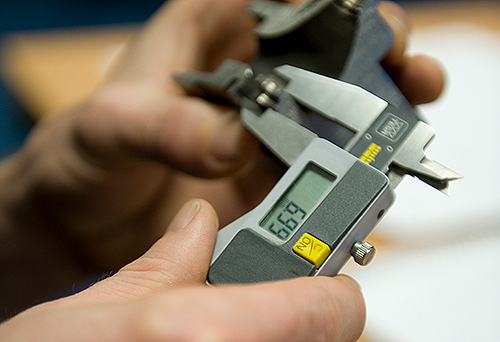
Whilst opinion about remanufacturing has changed significantly in recent years, there remains a common misconception that remanufacturing within the automotive industry belongs in the same category as ‘reconditioning’ and ‘repair’. Here, we look at what remanufacturing really means.
What is remanufacturing?
“Remanufacturing is the process of returning a used product to at least its original performance with a warranty that is equivalent to or better than that of the newly manufactured product.”
The Centre for Remanufacturing & Reuse (CRR)
The process involved in the remanufacturing of automotive parts is very similar to that involved in the production of the original component. The only real difference is that remanufacturing involves the restoration of a used component to its original condition, rather than the production of a brand-new part.
Often remanufacturing (or reman) means bringing the products back to the OE specification, using genuine parts and test equipment. At times aftermarket design improvements mean that remanufactured parts often outperform the OE originals as any design defects can be engineered out.
From a customer viewpoint, the reman product can be considered the same as a new product, providing a more attractively priced alternative to the original. In the case of engines, the price difference between a new and a reman engine can be substantial (with reman costs typically 20% — 30% lower than new).
The benefits of remanufacturing parts
In all instances, remanufactured parts can provide value for money and will perform in the same way as the original parts and last just as long. They provide the end user with an economical and safe way to maintain their vehicle on the road.
Remanufacturing also provides additional benefits on a wider scale. The CRR reports the benefits of reman to the environment can include;
Reduced raw material consumption – as reman preserves much of the material in the original product, less raw material is used than in the manufacture of new products. This is particularly beneficial where the product contains critical raw materials where there is a risk of limited supplies.
Reduced energy consumption & CO2 emissions – by limiting the amount of raw material extracted/recycled and the manufacturing of new components, remanufacturing typically uses less energy than manufacturing a new product; (around 80% less energy used versus production of new parts.) This is usually accompanied by a reduction in CO2 emissions.
Remanufactured turbocharger parts
Turbocharger remanufacturing is very popular within the aftermarket as an original turbo part can often be very costly to replace.
A professional turbo remanufacturer will carry out a ‘pre-production’ inspection of all old units to ensure that only the best turbo core is selected for reman.
Once selected, the turbo is completely dismantled and individual components thoroughly cleaned to remove dirt or debris, prior to a shot blasting treatment that returns the parts to the same visual condition as new. All parts are then individually inspected to ensure they meet the original specification and tolerances.
Then the reman process begins. Crucial parts like bearings and seals are 100% renewed, and the core assembly, turbine shaft and wheel and compressor wheel are checked according to OE specifications. After all parts are prepared, the core assembly is balanced using a balancing machine and only when a unit passes the final balancing tests is it deemed ready for final assembly.
The future of remanufacturing
It’s not just the remanufacturing industry who is benefiting, vehicle manufacturers are also exploring how the extended service life of reman products can provide many benefits, as well as providing cost effective solutions for older vehicles.
An article in The Engineer magazine highlights that a long-time leader in the field of remanufacturing has been Caterpillar Inc, the world’s biggest manufacturer of construction and mining equipment and diesel engines. Since 1973 CAT has developed a sophisticated reman business model of salvaging materials, remaking parts and offering them with the same warranty as new parts. It is currently recovering 2.2 million products, or 63,000 tonnes, through its Reman programme for remanufacturing parts.
Truck manufacturer, Isuzu has also recently announced a truck engine reman programme to assist businesses and owner-drivers with Isuzu engine replacements. The reman engines are covered by a 12-month unlimited mileage warranty, as Isuzu state their reman engines provide a premium solution that is quality-assured, cost-effective and quickly returns vehicles to the road.
It’s not just commercial and heavy plant vehicles that are embracing remanufacturing. As Automotive World reports, a handful of OEMs, including Jaguar Land Rover, have been investigating the potential for reuse and reman.
“The circular economy covers a complex and wide range of initiatives ensuring we work to make the best use of the valuable resources that go into our vehicles. This includes technological innovation – such as recycling, remanufacturing, autonomous vehicles and ownership models that consider the future mobility needs of our customers,” suggested Adrian Tautscher, Sustainable Aluminium Strategies, Jaguar Land Rover.
Renault is a trailblazer for car manufacturers across the world. It generates around half a billion euros annually from the circular economy of recycling and remanufacturing and is investigating the expansion of its European reman model into other regions of the world, including India, Brazil, Morocco and China.
So, with benefits to the consumer, manufacturers and the wider world, it looks like remanufacturing will continue to exert an increasing influence on the automotive industry, whether for passenger or commercial vehicles. Work is still needed to eliminate remaining customer negativity but as has been shown with public acceptance of recycling, such attitudinal changes are certainly possible.


